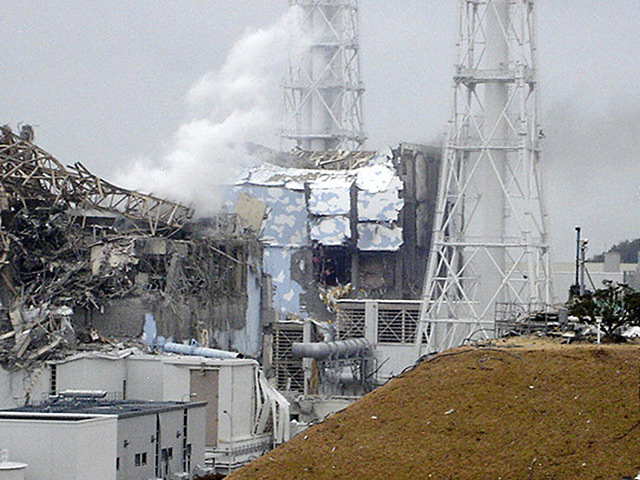
Japan’s nuclear watchdog admits it fears the latest disaster to strike the Fukushima nuclear plant is beyond its operator’s ability to cope.
The regulator is set to upgrade the crisis at the plant from a level 1 ‘anomaly’ to a level three ‘serious incident’ – the highest since the plant was crippled by an earthquake and tsunami two years ago.
It emerged this week that as much as 300 tons of highly radioactive water has leaked from one of the storage tanks at the site.
Tokyo Electric Power, the company responsible for the plant, said it has not yet discovered how or where the water leaked, but suspects it did so through a seam on the tank or a valve connected to a gutter around the tank.
The water’s radiation level, measured about 2ft above the puddle, was about 100 millisieverts per hour – the maximum cumulative exposure allowed for plant workers over five years, Mr Ono said.
TEPCO said that because the tank is about 330ft from the coastline, the leak does not pose an immediate threat to the sea. But Hideka Morimoto, a watchdog spokesman, said water could reach the sea via a drain gutter.
“We are extremely concerned,” Mr Morimoto said at a meeting yesterday.
Shunichi Tanaka, chairman of the regulatory body, said leaks from other tanks at the site were the biggest concern for the body at the moment.
“This will need to be handled carefully on the assumption that one incident could bring another.”
At least one commissioner at the regulator questioned the accuracy of data being released by Tepco and whether the incident had been fully reported.
Japanese Prime Minister Shinzo Abe said the company alone was not able to handle the clean-up and more government funds would be allocated to assist the operation.